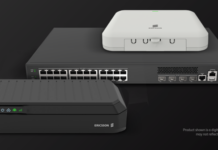Meta Networks Ltd., the technology leader in Software Defined Perimeter (SDP) solutions for secure remote access, highlighted five technology trends the company predicts will drive the adoption of SDPs in 2019. Among these trends are the shifts toward zero-trust networking and security; the increasing use of unmanaged devices; faster and more available internet connectivity; greater adoption of AI and machine-learning based behavioral analysis and industry-wide deployment of hybrid infrastructure/environments.
It is inevitable that the vast majority of organizations will conduct much of their IT operations using cloud infrastructure. This shift is impacting IT at all levels, especially security and networking, and is due in part to the rise in workforce mobility and employees who embrace a more agile remote work environment. As part of these larger trends, Meta Networks predicts 5 key factors that will increase the demand for zero-trust Software-Defined Perimeter solutions throughout 2019. These include:
- Industry-wide shift toward zero-trust approaches to networking and security – The era of trusted networks and trusted devices is over. Establishing security architecture on the classic site-centric perimeter no longer makes sense. As a result, new solutions are moving security controls to a software defined perimeter that follows the user. Centralized policy management allows the organization to verify user identities and validate device authenticity before granting access to a limited number of pre-approved resources.
- Increasing use of unmanaged devices – Both personal devices and those owned by non-employees, such as contractors and partners, will drive the need for secure access solutions that do not rely on the ability of IT to manage software on the device. This is a complex endeavor with the current generation of corporate VPNs.
- Faster and more available internet connectivity – The accelerated adoption of internet-based connectivity, including 5G, will mean more connected endpoints that bypass traditional security and increase the attack surface. New, software defined solutions will emerge to support the management of large-scale, bi-directional zero-trust networking and security.
- AI and machine learning-based behavioral analysis – Behavior analysis will be more important than ever in order to determine which access policy to apply and determine whether user behavior is “normal”. Access must be continually monitored and evaluated. We believe that this is in line with Gartner’s seven imperatives of a CARTA approach discussed in a 2018 report.
- Greater number of hybrid infrastructure/environments – Migration to the cloud will result in the increase in hybrid infrastructure which will drive enterprises to seek next- generation zero-trust solutions to provide secure connectivity and remote access across the environment. Such solutions will embrace the digital transformation, and work to secure it, rather than maintain the legacy concept of the perimeter.
For more information about Meta Networks, please visit www.metanetworks.com














